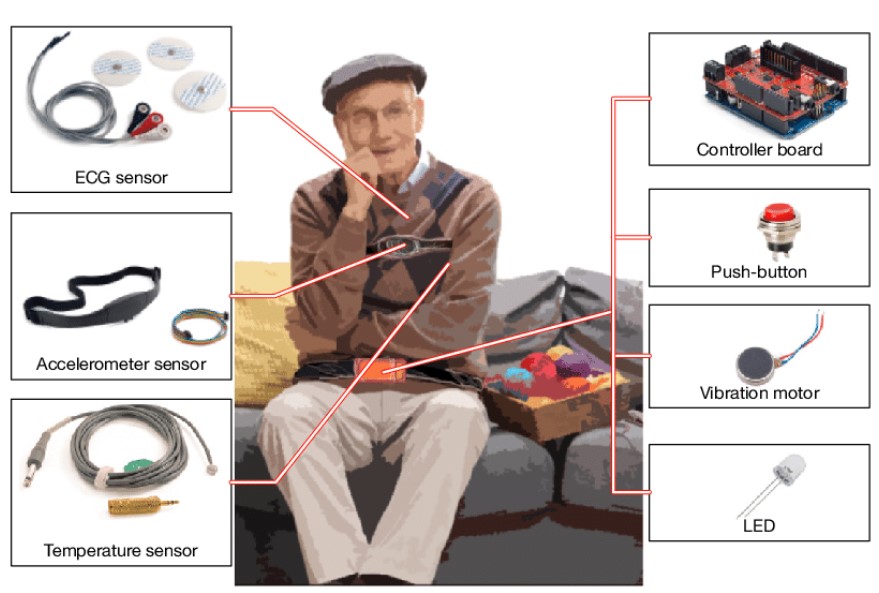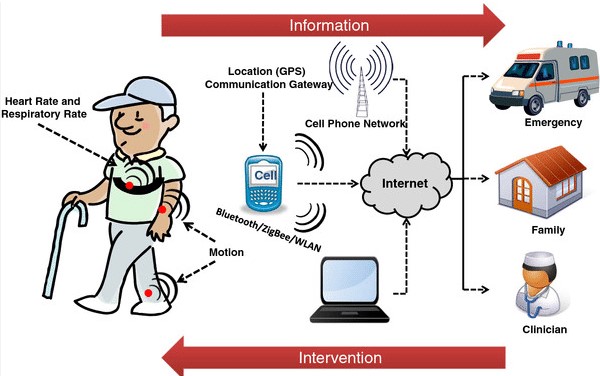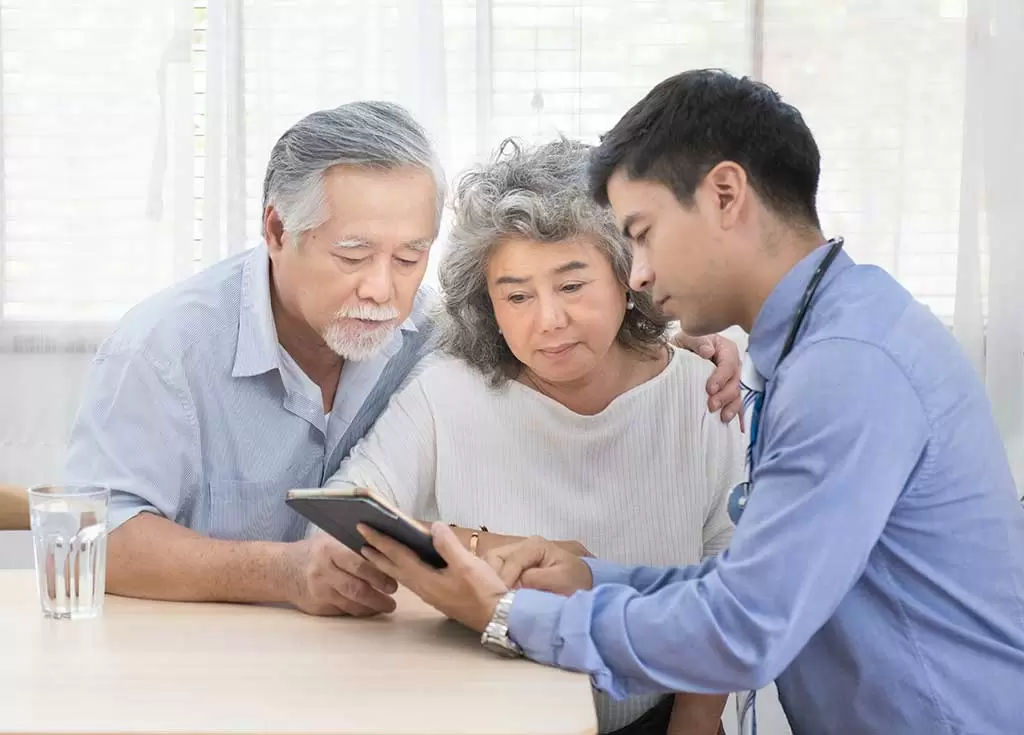As we age, maintaining good health becomes increasingly important, yet more challenging. Seniors often face a range of chronic conditions, mobility issues, and cognitive decline, making regular monitoring of vital signs and overall well-being crucial. Health monitoring tools have emerged as a game-changer, empowering seniors and their caregivers to proactively manage their health and enhance their quality of life.
These innovative tools encompass a wide array of devices and technologies, ranging from wearable fitness trackers to comprehensive home monitoring systems. They offer a non-invasive and convenient way to track various health metrics, such as heart rate, blood pressure, sleep patterns, and physical activity levels. By providing real-time data and insights, these tools enable early detection of potential health issues, allowing for timely interventions and preventive measures.
Moreover, health monitoring tools facilitate better communication and coordination between seniors, their families, and healthcare providers. Caregivers can remotely monitor their loved ones’ well-being, reducing the need for frequent in-person visits and ensuring prompt assistance when needed. Healthcare professionals can also leverage these tools to track their patients’ progress, adjust treatment plans accordingly, and provide personalized guidance.
Table of Contents
With the growing emphasis on aging in place and the increasing demand for remote healthcare services, health monitoring tools have become an indispensable part of modern senior care. They not only promote independence and autonomy but also offer peace of mind to seniors and their families, ensuring that their health and safety are continuously monitored and supported.

Wearable Devices
Wearable devices have become increasingly popular for seniors looking to monitor their health and maintain an active lifestyle. These compact and convenient tools can provide valuable insights into various health metrics, including physical activity, sleep patterns, heart rate, and more.
Fitness Trackers: Fitness trackers are wearable devices designed to track daily steps, distance traveled, calories burned, and other physical activity metrics. Many models also offer sleep tracking and heart rate monitoring. These devices can motivate seniors to stay active and meet their fitness goals. Popular options include Fitbit, Garmin, and Apple Watch.
Smartwatches: Smartwatches combine the functionality of a fitness tracker with additional features like smartphone notifications, reminders, and even emergency alerts. Some smartwatches can detect falls and automatically notify emergency contacts or services. Models like the Apple Watch and Samsung Galaxy Watch are known for their user-friendly interfaces and comprehensive health tracking capabilities.
Medical Alert Systems: Medical alert systems are designed specifically for seniors living independently. These wearable devices, often in the form of a pendant or wristband, feature a button that can be pressed to summon emergency assistance. Advanced systems may also include fall detection and GPS tracking. Brands like Life Alert, Medical Guardian, and Bay Alarm Medical are popular choices in this category.
Wearable devices offer seniors and their caregivers peace of mind by providing real-time health data and emergency response capabilities. However, it’s important to consider factors such as ease of use, battery life, and compatibility with other devices or apps when selecting the most suitable option.
Mobile Apps and Telehealth
As technology continues to advance, mobile apps and telehealth services are playing an increasingly important role in health monitoring for seniors. These tools offer convenient and accessible solutions for managing medications, tracking symptoms, and even conducting virtual doctor visits from the comfort of home.
Medication Reminders: Forgetting to take prescribed medications can have serious consequences, especially for seniors who may be managing multiple conditions. Mobile apps like Medisafe, Pill Reminder, and CareZone offer customizable reminders and tracking features to help ensure medications are taken on time and as prescribed.
Symptom Tracking: Apps like WebMD, CareZone, and MyChart allow users to log and monitor various symptoms, such as pain levels, blood pressure readings, or changes in appetite or sleep patterns. This data can be shared with healthcare providers, enabling more informed decision-making and better management of chronic conditions.
Virtual Doctor Visits: Telehealth platforms like Teladoc, AmWell, and Doctor on Demand facilitate virtual consultations with licensed healthcare professionals. Seniors can discuss their health concerns, receive diagnoses, and even obtain prescriptions without leaving their homes. This accessibility is particularly beneficial for those with mobility issues or living in remote areas.
These mobile apps and telehealth services empower seniors to take an active role in their healthcare, promoting independence and improving overall quality of life. With user-friendly interfaces and real-time data tracking, seniors and their caregivers can stay informed and proactive in managing their health.

Home Monitoring Systems
Home monitoring systems offer a comprehensive solution for seniors living independently. These systems typically consist of various sensors strategically placed throughout the home to monitor activity, detect emergencies, and track environmental conditions.
One of the key components of home monitoring systems is motion sensors. These discreet devices can detect movement in different areas of the home, providing valuable insights into the senior’s daily routine and activity levels. Abnormal patterns or prolonged inactivity can alert caregivers or family members, allowing for timely intervention if needed.
Fall detection is another critical feature of home monitoring systems. Specialized sensors can detect when a fall has occurred, triggering an immediate alert to emergency services or designated contacts. This technology can be life-saving, especially for seniors living alone, as it ensures prompt assistance in the event of a fall or other emergency.
Environmental monitoring is also an integral part of these systems. Sensors can track temperature, humidity, and air quality, ensuring a safe and comfortable living environment for seniors. This can be particularly beneficial for those with respiratory conditions or heat sensitivity, allowing for proactive measures to be taken if conditions become unfavorable.
Many home monitoring systems also incorporate emergency call buttons or voice-activated assistants, enabling seniors to easily summon help when needed. These features provide added peace of mind and a sense of security, knowing that assistance is readily available.
Advanced home monitoring systems may even integrate with other smart home devices, such as automated lighting, door locks, and appliance controls, further enhancing the safety and convenience of the living environment for seniors.
Chronic Condition Management
For seniors living with chronic conditions such as diabetes, heart disease, chronic obstructive pulmonary disease (COPD), and others, health monitoring tools can be invaluable in managing their health and maintaining independence. These tools can help track vital signs, medication adherence, and other important health data, enabling early intervention and better control over the condition.
Diabetes Management Tools
Continuous glucose monitoring (CGM) devices and smart insulin pens are game-changers for seniors with diabetes. CGM systems track blood sugar levels in real-time, alerting the user and caregivers to highs and lows. Smart insulin pens record dosages and sync with mobile apps, helping seniors stay on top of their insulin regimen.
Heart Disease Monitoring
Wearable ECG monitors and blood pressure cuffs can track heart health data for seniors with cardiovascular conditions. These devices can detect irregular heartbeats, high blood pressure, and other potential issues, allowing for timely intervention and medication adjustments.
COPD Management Solutions
For those with COPD, portable spirometers and oxygen level monitors can help track lung function and oxygen saturation levels. These tools can alert seniors and their caregivers to potential exacerbations, enabling prompt treatment and preventing hospitalizations.
Medication Management Apps
Across various chronic conditions, medication management apps can be invaluable for seniors. These apps can provide reminders, track adherence, and even sync with smart pill dispensers to ensure proper medication use.
By leveraging condition-specific health monitoring tools, seniors can take an active role in managing their chronic conditions, improving their quality of life and reducing the risk of complications or hospitalizations.
Choosing the Right Tools
Selecting the appropriate health monitoring tools for seniors can be a daunting task, as there are numerous factors to consider. Ease of use should be a top priority, as many seniors may have limited experience with technology or physical limitations that can make certain devices challenging to operate. Look for intuitive interfaces, large buttons or touchscreens, and clear instructions.
Cost is another crucial consideration, as some health monitoring systems can be expensive, especially those that require professional installation or ongoing subscription fees. It’s essential to evaluate your budget and explore options that offer good value for money without compromising on quality or functionality.
Compatibility with existing devices or systems is also important. If the senior already uses a smartphone or tablet, look for health monitoring tools that can seamlessly integrate with those devices. This can simplify the learning curve and ensure a more cohesive experience.
Caregiver involvement is another factor to consider. Many health monitoring tools offer features that allow family members or professional caregivers to remotely monitor the senior’s health data, receive alerts, and even communicate with them. Evaluate the level of caregiver involvement required or desired, and choose tools that facilitate this aspect effectively.
Finally, it’s crucial to involve the senior in the decision-making process. Consider their preferences, needs, and comfort level with technology. Encourage them to try out different options and provide feedback to ensure that the chosen health monitoring tools align with their lifestyle and promote their independence and well-being.
Privacy and Security Concerns
When it comes to health monitoring tools for seniors, privacy and security are paramount concerns. These devices and systems often collect and transmit sensitive personal health information, making data protection a critical issue. Compliance with regulations like the Health Insurance Portability and Accountability Act (HIPAA) is essential for any healthcare-related technology.
Cybersecurity risks are also a significant consideration. Hackers and cybercriminals may attempt to gain unauthorized access to health data, which could lead to identity theft, financial fraud, or even potential harm if medical information is compromised. Robust encryption, secure authentication, and regular software updates are necessary to protect against these threats.
Seniors and their caregivers should carefully review the privacy policies and security measures implemented by the manufacturers of health monitoring tools. It’s important to understand how data is collected, stored, and shared, as well as what safeguards are in place to prevent breaches or misuse of personal information.
Reputable companies will prioritize data protection and adhere to industry best practices for cybersecurity. However, users should also take precautions, such as using strong passwords, avoiding public Wi-Fi connections, and being cautious about sharing sensitive information online or over the phone.
Ultimately, the benefits of health monitoring tools must be weighed against the potential risks to privacy and security. By staying informed and taking appropriate precautions, seniors and their loved ones can leverage these technologies while minimizing the chances of data breaches or compromised personal information.
Case Studies and Success Stories
Mrs. Smith’s Fall Detection Wearable
Mrs. Smith, an 82-year-old widow living alone, had a history of falls due to her advanced age and osteoporosis. Her family was constantly worried about her well-being, especially when she was home alone. After researching various options, they decided to get her a fall detection wearable device. One day, while Mrs. Smith was in her kitchen, she lost her balance and fell to the floor. The wearable device immediately detected the fall and alerted emergency services. Within minutes, paramedics arrived and provided prompt medical attention. Thanks to the wearable device, Mrs. Smith received timely care and avoided potential complications from prolonged lying on the floor.
Mr. Johnson’s Remote Glucose Monitoring
Mr. Johnson, a 75-year-old man with type 2 diabetes, struggled to keep his blood sugar levels under control. His condition required frequent monitoring and adjustments to his medication and diet. With the help of a remote glucose monitoring system, Mr. Johnson could easily track his blood sugar levels from the comfort of his home. The system automatically transmitted his readings to his healthcare provider, who could then make informed decisions about his treatment plan. This not only improved Mr. Johnson’s overall health but also reduced the need for frequent hospital visits, saving him time and money.
Mrs. Lee’s Telehealth Consultations
Mrs. Lee, an 88-year-old woman with multiple chronic conditions, found it increasingly difficult to attend regular doctor’s appointments due to mobility issues and transportation challenges. Her healthcare provider suggested using a telehealth platform, which allowed her to have virtual consultations from the convenience of her home. During these video appointments, Mrs. Lee could discuss her health concerns, receive guidance on managing her conditions, and even have her vital signs remotely monitored. The telehealth solution provided Mrs. Lee with continuous care while reducing the burden of traveling to the clinic.
Future Trends and Innovations
The field of health monitoring tools for seniors is rapidly evolving, driven by technological advancements and a growing demand for innovative solutions. Emerging technologies are poised to revolutionize the way we monitor and manage the health of our aging population.
Emerging Technologies
Cutting-edge technologies like artificial intelligence (AI), machine learning, and the Internet of Things (IoT) are paving the way for more sophisticated and intelligent health monitoring systems. These technologies can analyze vast amounts of data, identify patterns, and provide real-time insights into an individual’s health status.
AI-Powered Monitoring
AI-powered monitoring tools can continuously analyze vital signs, activity levels, and other health data to detect anomalies, predict potential health issues, and alert caregivers or healthcare professionals. Advanced algorithms can learn an individual’s baseline and adapt to their unique needs, enabling highly personalized and proactive care.
Integration with Smart Homes
As smart home technology becomes more prevalent, health monitoring tools are increasingly being integrated into these systems. Sensors embedded in homes can track movement, detect falls, monitor sleep patterns, and even analyze vocal patterns for signs of cognitive decline. This seamless integration allows for comprehensive monitoring without the need for obtrusive wearable devices.
Moreover, voice-controlled virtual assistants can provide medication reminders, schedule appointments, and even facilitate communication with healthcare providers. This integration not only enhances convenience but also promotes independence and aging in place for seniors.
Resources and Support
As the population ages, there is a growing need for reliable resources and support systems to help seniors and their caregivers navigate the world of health monitoring tools. Here are some valuable resources to consider:
Reliable Information Sources:
Government agencies like the National Institute on Aging and the Administration for Community Living offer comprehensive guides and educational materials on various health monitoring tools and technologies for seniors. Many non-profit organizations, such as AARP and the Alzheimer’s Association, also provide valuable information and resources tailored to the needs of older adults and their caregivers.
Support Groups:
Joining a support group can be incredibly beneficial for seniors and their caregivers. These groups provide a safe space to share experiences, ask questions, and learn from others who are facing similar challenges. Many local community centers, hospitals, and online platforms offer support groups specifically focused on health monitoring tools and aging-related topics.
Assistance Programs:
Depending on your location and circumstances, there may be assistance programs available to help seniors and their families access and afford health monitoring tools. These programs can include subsidies, discounts, or even free devices and services. Local Area Agencies on Aging, social service organizations, and non-profit groups can provide information on available assistance programs and eligibility requirements.
Caregiver Resources:
Caring for an aging loved one can be physically and emotionally demanding. Organizations like the Family Caregiver Alliance and the National Alliance for Caregiving offer resources, education, and support specifically designed for caregivers. These resources can help caregivers better understand and utilize health monitoring tools while also prioritizing their own well-being.
Remember, navigating the world of health monitoring tools for seniors can be overwhelming, but you don’t have to go through it alone. Utilizing these resources and seeking support can make the journey much more manageable and ensure that you or your loved one receives the best possible care.



